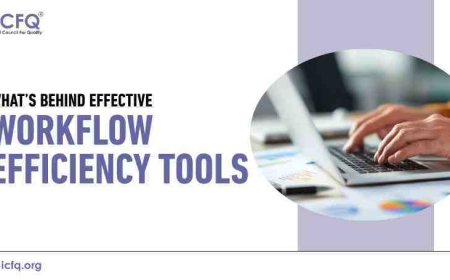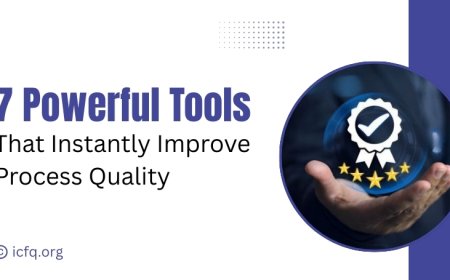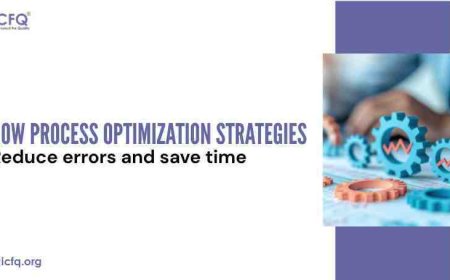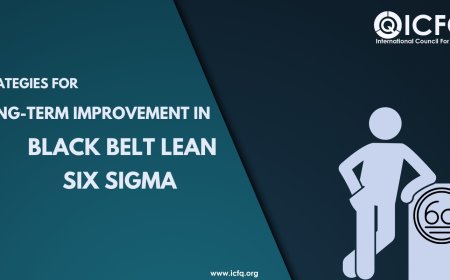What’s Behind Effective Workflow Efficiency Tools
Explore how workflow efficiency tools and Six Sigma principles help professionals achieve excellence, cut waste, and master modern productivity.
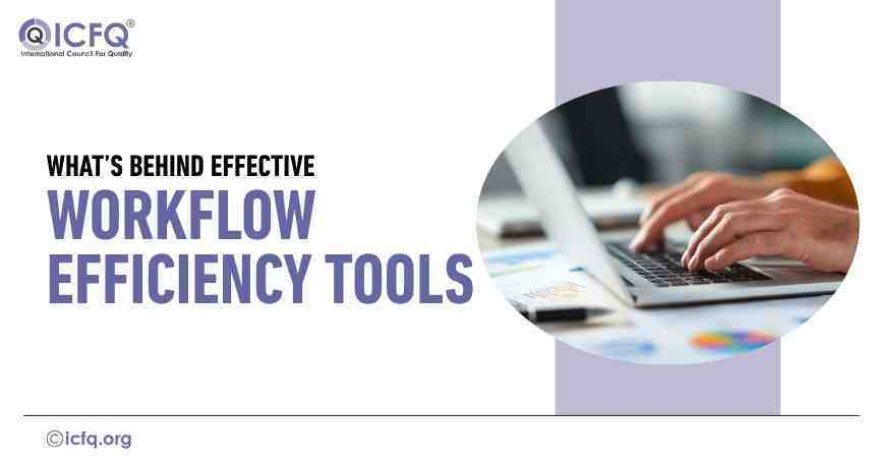
You start your day with motivation - coffee in hand, goals in mind, and a to-do list that feels within reach. But within an hour, messages pile up, priorities shift, and by evening, you’ve worked all day but can’t quite point to what you accomplished.
Sound familiar? You’re not alone.
It’s not about working harder - it’s about working smarter. That’s where workflow efficiency tools and Six Sigma principles meet, in the art and science of turning chaos into structure, motion into results, and good work into great performance.
Why Efficiency Isn’t Just About Tools - It’s About Mindset
When most people think of “efficiency,” they imagine software dashboards and automation. But true workflow efficiency begins with how you think about work.
Efficiency means:
-
Understanding your process
-
Reducing unnecessary steps
-
Eliminating delays and waste
-
Measuring what matters
And that’s exactly what Six Sigma teaches - a framework that drives continuous improvement by identifying, analyzing, and eliminating inefficiencies.
Workflow tools are powerful, but without the mindset that Six Sigma brings, they’re just software. With the right approach, they become strategic enablers for excellence.
The Psychology Behind Effective Workflow Efficiency
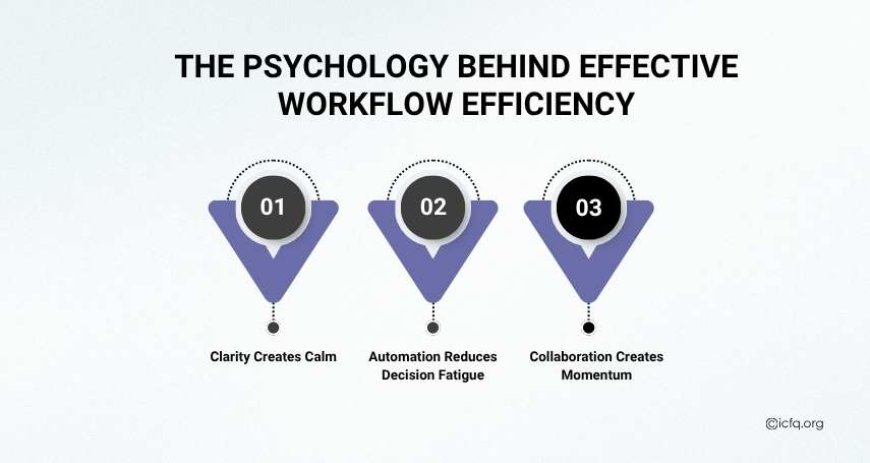
Human beings are wired for clarity, not chaos. We thrive in systems that help us see progress, reduce decisions, and collaborate without friction. The best workflow efficiency tools tap directly into these psychological triggers.
1. Clarity Creates Calm
When tasks feel scattered, your brain spends energy just staying organized. Visual workflows - like Kanban boards or Gantt charts - provide structure that instantly reduces stress.
A Stanford study found that professionals who visualize their work are 32% more focused and finish projects 18% faster.
This is the foundation of Six Sigma’s Define phase - clarity before execution. Because when you define your goals and process visually, performance naturally improves.
2. Automation Reduces Decision Fatigue
The average employee makes 35,000 micro-decisions per day, from responding to emails to updating reports. Workflow tools automate repetitive steps, allowing teams to focus on high-impact work.
This mirrors Six Sigma’s Measure and Improve stages, where repetitive waste is replaced by automated consistency.
Automation isn’t about replacing people - it’s about freeing their potential.
3. Collaboration Creates Momentum
Efficiency thrives in alignment. When everyone understands the workflow, dependencies, and responsibilities, teamwork becomes effortless.
The most effective tools promote shared visibility - ensuring every team member moves toward the same target.
That’s the essence of the Control phase in Six Sigma: maintaining alignment through shared standards.
The Anatomy of an Effective Workflow Tool
Not all tools are created equal. The most impactful ones align technology with psychology - helping teams focus, automate, and improve continuously.
|
Element |
What It Does |
Why It Matters |
|
Ease of Use |
Simple, intuitive interface |
Keeps users engaged and consistent |
|
Automation |
Streamlines repetitive tasks |
Reduces errors and saves hours weekly |
|
Integration |
Connects with CRM, email, or ERP |
Minimizes tool switching fatigue |
|
Analytics |
Measures progress and bottlenecks |
Enables data-driven decisions |
|
Customization |
Adapts to unique workflows |
Supports scalability and innovation |
The leading platforms, ClickUp, Notion, Trello, Asana, and Monday.com, all follow a similar principle: they combine structure with adaptability.
And that’s what makes them resonate with Six Sigma’s DMAIC model - Define, Measure, Analyze, Improve, Control.
From Overload to Order
Take Zapier, for example - a fully remote company with over 700 employees across continents. As the organization scaled, miscommunication and redundancy crept in. Teams spent hours aligning updates and duplicating tasks.
Instead of hiring more people, Zapier redefined its workflows. It used automation to handle 80% of repetitive processes like approvals, onboarding, and report generation.
Within a year, they recorded:
-
35% higher productivity,
-
20% faster project completion, and
-
a 25% drop in internal communication delays.
What changed wasn’t just the tool - it was the thinking behind it. By applying Six Sigma-style process mapping and improvement cycles, Zapier turned workflow software into a system for excellence.
Why Many Still Struggle with Workflow Efficiency
If efficiency tools are so effective, why do most professionals still feel overwhelmed?
Because tools don’t fail - systems do.
Here’s what goes wrong:
-
Too many platforms create confusion instead of clarity.
-
Teams use tools without defining processes.
-
There’s no measurement of improvement - just activity.
-
Habits don’t change, so inefficiency returns.
That’s where Six Sigma bridges the gap. It’s the “why” and “how” behind sustainable efficiency.
Without it, tools are temporary fixes. With it, they become long-term solutions that continuously change with your workflow.
The Six Sigma Edge: Turning Tools into Transformation
Six Sigma isn’t just a certification; it’s a philosophy of excellence. It gives you the blueprint to make workflow tools work for you - by aligning people, processes, and performance.
Here’s how it connects directly with workflow optimization:
|
Six Sigma Principle |
Workflow Impact |
|
Define |
Identify key goals and eliminate noise in the task flow |
|
Measure |
Use analytics to track efficiency metrics |
|
Analyze |
Find patterns causing delays or rework |
|
Improve |
Automate or redesign inefficient steps |
|
Control |
Sustain improvements using dashboards and reports |
Six Sigma turns workflow tools from passive platforms into active improvement systems. It ensures your data isn’t just recorded - it’s refined into results.
How to Choose the Right Workflow Efficiency Tool
Before you invest in any tool, pause and ask:
-
Does it make my day simpler or more complicated?
-
Can my team use it easily without extra training?
-
Does it integrate with my current systems?
-
Can I measure real improvement with it?
Start small - automate one recurring process. Set a clear metric. Review results. Then scale gradually.
That’s the Six Sigma way - test, measure, refine, repeat.
True efficiency isn’t about instant change. It’s about consistent progress.
The Future of Workflow Efficiency
The next generation of workflow efficiency tools is already here- powered by AI, data analytics, and predictive insights.
Modern platforms can now:
-
Predict project delays before they happen,
-
Suggest process improvements automatically, and
-
Generate performance insights in real time.
Build Efficiency the Six Sigma Way
Workflow efficiency isn’t just about saving time - it’s about creating excellence that lasts.
When you combine the right tools with the right mindset, you don’t just get more done - you get better results, smarter systems, and stronger teams.
If you’re ready to stop chasing productivity and start mastering it
Start your Six Sigma journey with ICFQ today.
Gain the skills to optimize, lead, and transform the way you work - not just for now, but for the future of business excellence.





